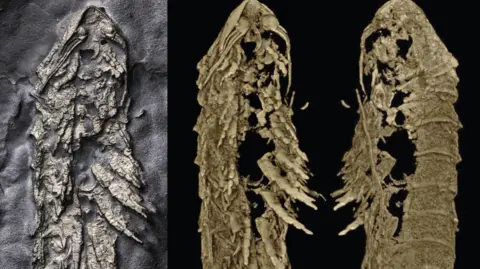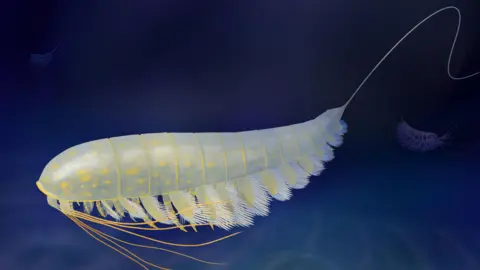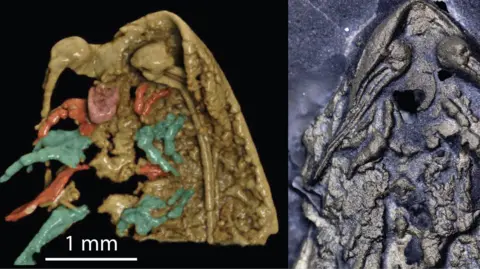Spider relative 3D fossil preserved in fool's gold
 PA
PAA 450-million-year-old fossil of an ancient relative of spiders has been discovered preserved in 3D by fool's gold.
The new species, which is distantly related to arachnids such as scorpions and horseshoe crabs, was found by a research team lead by the University of Oxford.
It belongs to an arthropods group called megacheirans, which have a large, modified leg at the front of their bodies used to capture prey.
Associate prof Luke Parry, of the university's department of earth sciences, said that the fossils were "spectacularly preserved".
The fossil was found at a site at the famous Beecher's Trilobite Bed in New York State, a layer of rock containing multiple well-preserved fossils.
The animals preserved there lived in a hostile, low oxygen environment.
That allowed iron pyrite, commonly known as fool's gold, to replace parts of their bodies after they were buried, resulting in golden 3D fossils.
 PA
PAThe new species has been called lomankus edgecombei, after arthropod expert Greg Edgecombe of London's Natural History Museum.
Experts suggest the discovery sheds light on the long-standing riddle of how arthropods evolved the parts on their heads.
They can include the antennae of insects and crustaceans, and the pincers and fangs of spiders and scorpions.
But unlike other megacheirans, their flexible, whip-like hairs suggest the creature was using this frontal appendage to sense the environment, rather than to capture prey.
Associate Prof Parry, who lead the research team, said the fossils "look as if they could just get up and scuttle away".
"Part of the key to this success is their highly adaptable head and its appendages, that has adapted to various challenges like a biological Swiss army knife", he said.
"As well as having their beautiful and striking golden colour, these fossils are spectacularly preserved."
 PA
PAYou can follow BBC Oxfordshire on Facebook, X (Twitter), or Instagram.
